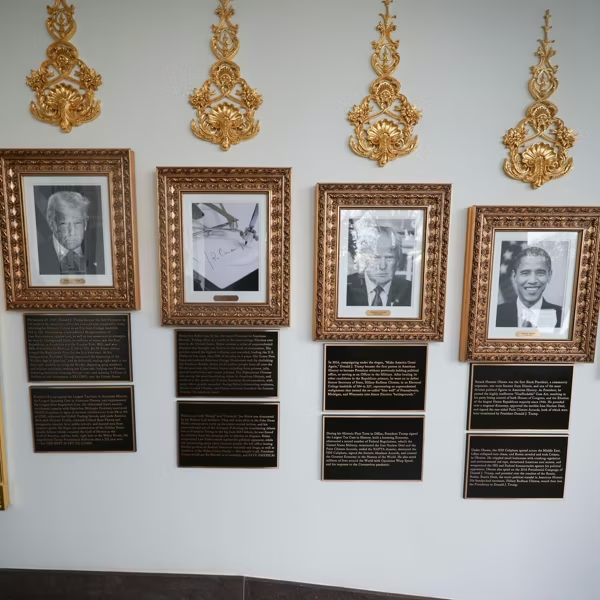Postcard From...Bi'lin
The ritual occurs every Friday in Bi'lin, occupied West Bank.
Palestinian protestors -- community members and activists -- gather around the mosque following midday prayers to march against the construction of the separation wall and the proliferation of Israeli settlements.
The ritual occurs every Friday in Bi'lin, occupied West Bank.
Palestinian protestors -- community members and activists -- gather around the mosque following midday prayers to march against the construction of the separation wall and the proliferation of Israeli settlements.
What made last week's march different was the overwhelming presence of foreigners. The fourth Bi'lin International Conference on Popular Resistance, a three-day conference that I attended from April 22-24, was intended to build solidarity and support for the Palestinian nonviolent struggle. Conference participants included Palestinian political leaders and community members, delegations from South Africa and Italy, and European Parliament Vice President Luisa Morgantini. The closing activity was a larger-than-usual protest against the construction of a wall that will arbitrarily cut across large parts of the village, separating families from each other and villagers from their land.
The Friday protest marches are nonviolent, yet they always end the same way: Israeli security forces use teargas grenades and rubber bullets to disperse the protesters. Many of the women and children fall back and eventually retreat to avoid being hit, and restive Palestinian youth respond by throwing rocks at soldiers. There are frequent casualties, and on the Palestinian side, the nonviolent protests sometimes end in severe injury or death.
The international solidarity march honored a fallen comrade of the popular nonviolent resistance movement -- a young man named Bassem Abu Rahma. One week earlier, Bassem was hit with a tear gas canister at close range, directly in the chest. A few weeks before, the same type of canister critically injured U.S. citizen and nonviolent campaigner Tristan Anderson. He remains in a coma. Amid tear gas and loud warning sirens, Palestinian and international activists built a modest memorial at the site of Bassem's tragic death.
Palestinian communities in the villages of Bi'lin, Ni'lin, Budrus, and others scattered throughout the West Bank are committed to nonviolent action to resist the construction of the separation wall, home evictions, and the creation of Israeli settlements on Palestinian land. What will be interesting to watch is whether these growing local movements can coalesce to become a unified, Palestinian national movement. Strategic thinking that includes planning, strict nonviolent discipline and diverse, creatively sequenced tactics could minimize casualties to young people like Bassem, and create a real dilemma for the Israeli occupation.
In the meantime, the ritual continues every Friday in Bi'lin.
An Urgent Message From Our Co-Founder
Dear Common Dreams reader, The U.S. is on a fast track to authoritarianism like nothing I've ever seen. Meanwhile, corporate news outlets are utterly capitulating to Trump, twisting their coverage to avoid drawing his ire while lining up to stuff cash in his pockets. That's why I believe that Common Dreams is doing the best and most consequential reporting that we've ever done. Our small but mighty team is a progressive reporting powerhouse, covering the news every day that the corporate media never will. Our mission has always been simple: To inform. To inspire. And to ignite change for the common good. Now here's the key piece that I want all our readers to understand: None of this would be possible without your financial support. That's not just some fundraising cliche. It's the absolute and literal truth. We don't accept corporate advertising and never will. We don't have a paywall because we don't think people should be blocked from critical news based on their ability to pay. Everything we do is funded by the donations of readers like you. Will you donate now to help power the nonprofit, independent reporting of Common Dreams? Thank you for being a vital member of our community. Together, we can keep independent journalism alive when it’s needed most. - Craig Brown, Co-founder |
The ritual occurs every Friday in Bi'lin, occupied West Bank.
Palestinian protestors -- community members and activists -- gather around the mosque following midday prayers to march against the construction of the separation wall and the proliferation of Israeli settlements.
What made last week's march different was the overwhelming presence of foreigners. The fourth Bi'lin International Conference on Popular Resistance, a three-day conference that I attended from April 22-24, was intended to build solidarity and support for the Palestinian nonviolent struggle. Conference participants included Palestinian political leaders and community members, delegations from South Africa and Italy, and European Parliament Vice President Luisa Morgantini. The closing activity was a larger-than-usual protest against the construction of a wall that will arbitrarily cut across large parts of the village, separating families from each other and villagers from their land.
The Friday protest marches are nonviolent, yet they always end the same way: Israeli security forces use teargas grenades and rubber bullets to disperse the protesters. Many of the women and children fall back and eventually retreat to avoid being hit, and restive Palestinian youth respond by throwing rocks at soldiers. There are frequent casualties, and on the Palestinian side, the nonviolent protests sometimes end in severe injury or death.
The international solidarity march honored a fallen comrade of the popular nonviolent resistance movement -- a young man named Bassem Abu Rahma. One week earlier, Bassem was hit with a tear gas canister at close range, directly in the chest. A few weeks before, the same type of canister critically injured U.S. citizen and nonviolent campaigner Tristan Anderson. He remains in a coma. Amid tear gas and loud warning sirens, Palestinian and international activists built a modest memorial at the site of Bassem's tragic death.
Palestinian communities in the villages of Bi'lin, Ni'lin, Budrus, and others scattered throughout the West Bank are committed to nonviolent action to resist the construction of the separation wall, home evictions, and the creation of Israeli settlements on Palestinian land. What will be interesting to watch is whether these growing local movements can coalesce to become a unified, Palestinian national movement. Strategic thinking that includes planning, strict nonviolent discipline and diverse, creatively sequenced tactics could minimize casualties to young people like Bassem, and create a real dilemma for the Israeli occupation.
In the meantime, the ritual continues every Friday in Bi'lin.
The ritual occurs every Friday in Bi'lin, occupied West Bank.
Palestinian protestors -- community members and activists -- gather around the mosque following midday prayers to march against the construction of the separation wall and the proliferation of Israeli settlements.
What made last week's march different was the overwhelming presence of foreigners. The fourth Bi'lin International Conference on Popular Resistance, a three-day conference that I attended from April 22-24, was intended to build solidarity and support for the Palestinian nonviolent struggle. Conference participants included Palestinian political leaders and community members, delegations from South Africa and Italy, and European Parliament Vice President Luisa Morgantini. The closing activity was a larger-than-usual protest against the construction of a wall that will arbitrarily cut across large parts of the village, separating families from each other and villagers from their land.
The Friday protest marches are nonviolent, yet they always end the same way: Israeli security forces use teargas grenades and rubber bullets to disperse the protesters. Many of the women and children fall back and eventually retreat to avoid being hit, and restive Palestinian youth respond by throwing rocks at soldiers. There are frequent casualties, and on the Palestinian side, the nonviolent protests sometimes end in severe injury or death.
The international solidarity march honored a fallen comrade of the popular nonviolent resistance movement -- a young man named Bassem Abu Rahma. One week earlier, Bassem was hit with a tear gas canister at close range, directly in the chest. A few weeks before, the same type of canister critically injured U.S. citizen and nonviolent campaigner Tristan Anderson. He remains in a coma. Amid tear gas and loud warning sirens, Palestinian and international activists built a modest memorial at the site of Bassem's tragic death.
Palestinian communities in the villages of Bi'lin, Ni'lin, Budrus, and others scattered throughout the West Bank are committed to nonviolent action to resist the construction of the separation wall, home evictions, and the creation of Israeli settlements on Palestinian land. What will be interesting to watch is whether these growing local movements can coalesce to become a unified, Palestinian national movement. Strategic thinking that includes planning, strict nonviolent discipline and diverse, creatively sequenced tactics could minimize casualties to young people like Bassem, and create a real dilemma for the Israeli occupation.
In the meantime, the ritual continues every Friday in Bi'lin.

